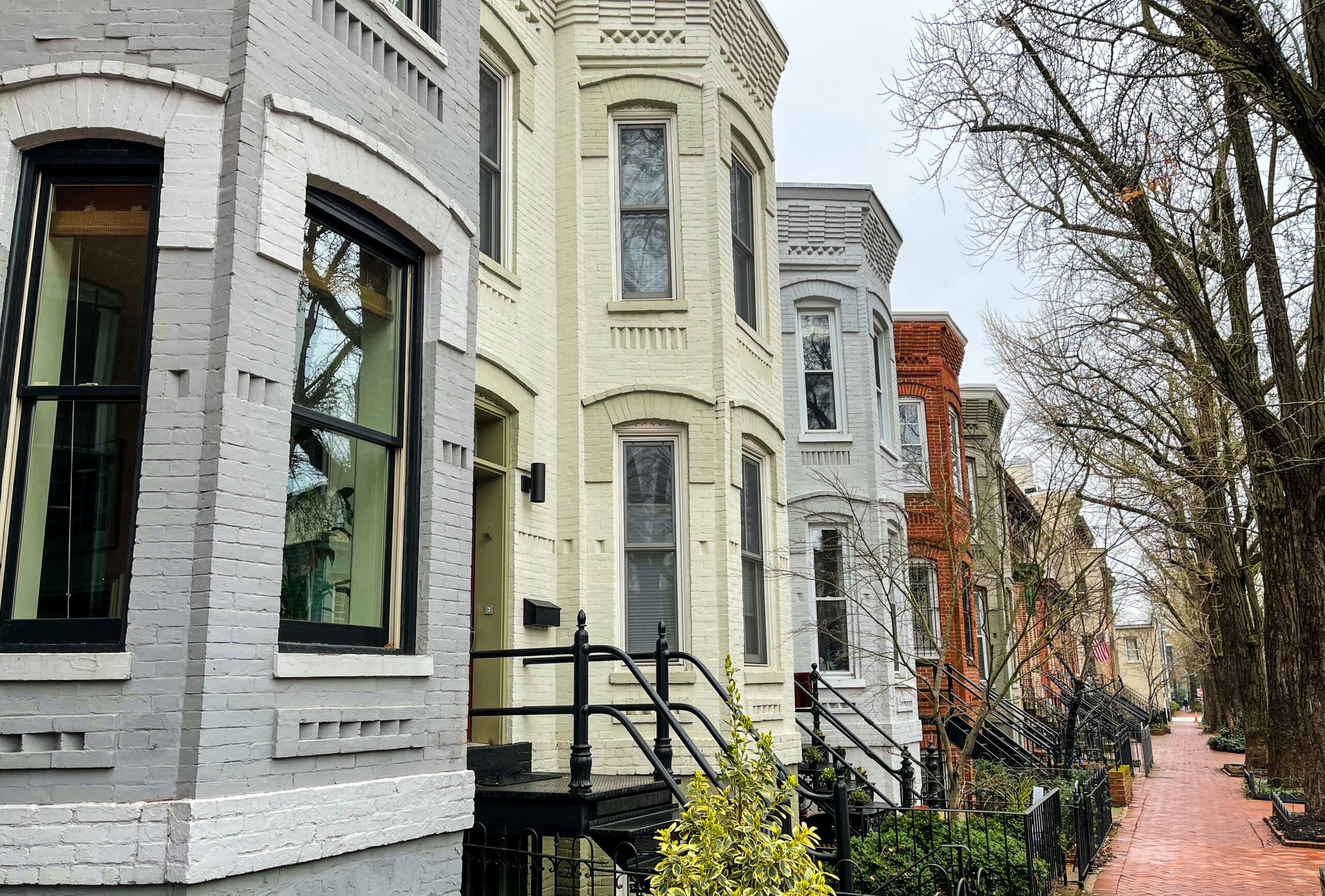This week’s chart of the week is excerpted from an upcoming D.C. Policy Center report titled “TOPA’s Promise and Pitfalls: Balancing tenant rights, affordability, and housing investment in Washington, D.C.,” which will be published next week.
The Tenant Opportunity to Purchase Act (TOPA) was enacted in 1980 in response to rising concerns over tenant displacement, triggered by declining multifamily housing production and an increase in condominium conversions. Initially, TOPA gave tenants the opportunity to buy their residences—either individually as condominiums or collectively as cooperatives.
Over the years, the law has undergone significant changes, affecting both its scope and impact. Various amendments expanded the types of transactions that are eligible in the definition of a sale (1989, 1994, 2005), enabled tenants to assign their purchase rights to potential buyers allowing the units remain as rentals (1995), and exempted single-family homes (2018).
As the legal framework evolved, so have the outcomes. Today, 95 percent of units that go through TOPA do not result in tenant purchase, but instead remain as rentals through assignment of rights. In these cases, tenant associations (TAs) primarily use TOPA as a negotiating tool to secure building repairs or improvements, affordability covenants, rent concessions, or financial settlements.
Today, there is no universal definition of a “successful” TOPA outcome. While any of these results might be considered a success, some objectives conflict with others. For instance, negotiating financial payouts might come at the expense of securing long-term affordability commitments.
At the same time, there is growing concern that TOPA’s broad sale definition complicates recapitalization and deters new investments. TOPA related delays, lawsuits, and market changes can disrupt transactions, causing financial losses. Even partial ownership changes and refinancing can trigger TOPA proceedings, making D.C. less attractive to investors compared to markets with clearer capitalization and exit strategies.
Although no comprehensive data exist to evaluate TOPA outcomes systematically,1 there are two important steps we can measure. When a building is sold or more than 50 percent of the interest is transferred, the owner must send tenants an Offer of Sale. Tenants then have the option of forming a tenant association (TA), the first step necessary for tenant purchase, assignment of rights, negotiated repairs, rent concessions, or cash settlements.2 To assess TOPA’s impact, the D.C. Policy Center analyzed 419 TOPA-applicable transactions (16,962 units)3 that occurred between 2012 and 2023, which included 158 registered TAs representing 7,409 units.4
TOPA most frequently applies to smaller, rent-controlled buildings.
Between 2012 and 2023, most transactions subject to TOPA occurred in small, rent-controlled buildings. Of the 419 applicable transactions, 65 percent occurred in buildings with fewer than 20 units, and 82 percent occurred in buildings with fewer than 50 units. Nearly all of these small buildings are subject to rent control, with 99 percent of buildings with fewer than 20 units and 97 percent of buildings with 20 to 49 units built before 1978.5
TA formations are also concentrated in smaller, rent-controlled buildings.
Among the 158 confirmed registered tenant associations (TAs), 71 percent occurred in buildings with fewer than 20 units, and 88 percent were in buildings with fewer than 50 units. Larger buildings were far less likely to see TA formation—only 32 TAs (20 percent) formed in buildings with more than 50 units.
More than 96 percent of TAs formed in older, rent controlled properties built before 1978. In contrast, only five TAs formed in buildings built since 2007, and only one TA formed in a building constructed between 1978 and 2006.
What’s next from the D.C. Policy Center?
Changing market conditions including significant decreases in new housing permits and the recently introduced legislation by Mayor Bowser, the RENTAL Act, require a deeper understanding of TOPA laws and their changing impact on the District’s housing landscape.
Next week, the D.C. Policy Center will release a new report titled “TOPA’s Promise and Pitfalls: Balancing tenant rights, affordability, and housing investment in Washington, D.C.” to provide a comprehensive analysis of the District’s TOPA laws using quantitative data on the District’s rental housing stock, recent sales, and TA formations, as well as qualitative data from stakeholder interviews.
This work is a part of The Wilkes Initiative on Housing Policy. The research agenda for The Wilkes Initiative can be found here.
Endnotes
- The three pieces of information that can be gleaned from data are the Offer of Sale, TA registration, and final sale. No data exists on assignment of rights, tenant purchase, negotiation outcomes, the length of the negotiation period, or whether the deal has fallen apart (no sale).
- If a TA does not form, then the sale proceeds as normal.
- These include all transactions where the owner must send the tenants an Offer of Sale. Not all these are sales that result in a complete change in ownership. Owners must send an Offer of Sale if the transaction involves the transfer of more than 50 percent of the interest in the property.
- This data was compiled and provided to us by Greysteel, a real estate investment firm.
- For a building to be under rent control it must have received its construction permits before 1976, meaning that many buildings built in 1976 and 1977 are subject to rent control. For simplicity we used 1977 as the cut off to estimate which buildings would fall into this category.
